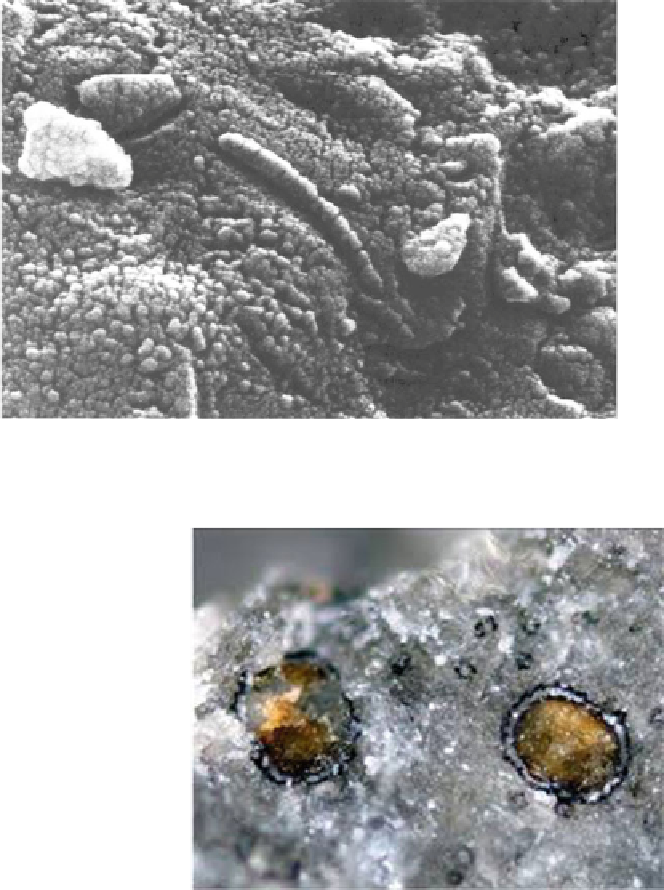Geoscience Reference
In-Depth Information
Fig. 8.27
An electron microscope reveals Archaean-like structures in meteorite fragment
ALH84001
(
http://www.lpi.usra.edu/lpi/meteorites/life.html
- NASA-JSC/Lunar and Planetary
Institute, 1996)
Fig. 8.28
Microscopic
image of polycyclic aromatic
hydrocarbon (PAH)
molecules surrounded by
magnetite crystals inside the
ALH84001 Martian
meteorite. PAHs and
magnetite are strongly related
to microbiological activity
corrected.pdf
- NASA-JSC,
1996)
This caused additional interest in this meteorite, so in 2006, NASA managed to
obtain an additional and larger sample from the London Natural History Museum.
On this second sample, a large dendritic carbon content was observed. When the
results and evidence were published on 2006, some independent researchers claimed
that the carbon deposits are of biological origin. However, it was remarked that since
carbon is the fourth most abundant element in the universe, finding it in curious
patterns is not indicative or suggestive of biological origin.

Search WWH ::

Custom Search